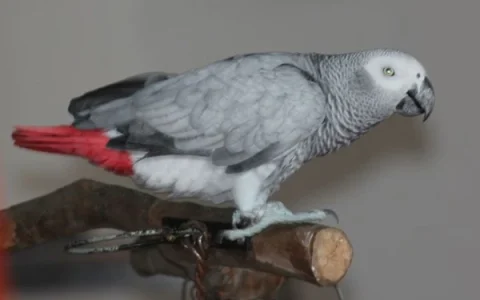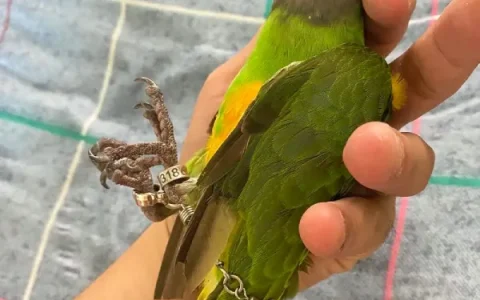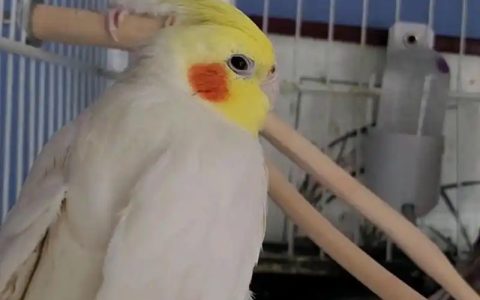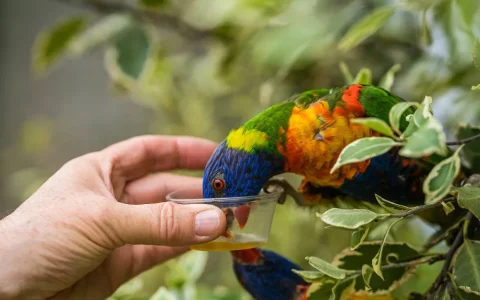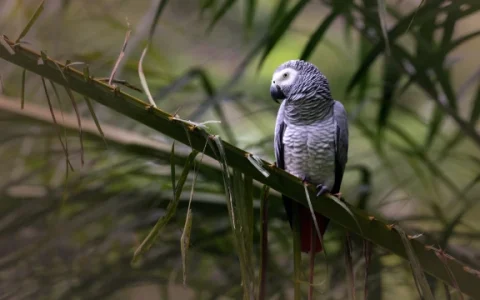Parrots are intelligent, sensitive creatures that can become frightened easily. Whether you’re a new owner or building a bond with a rescued or rehomed bird, knowing how not to scare your parrot is fundamental to developing trust, improving behavior, and ensuring long-term emotional well-being.
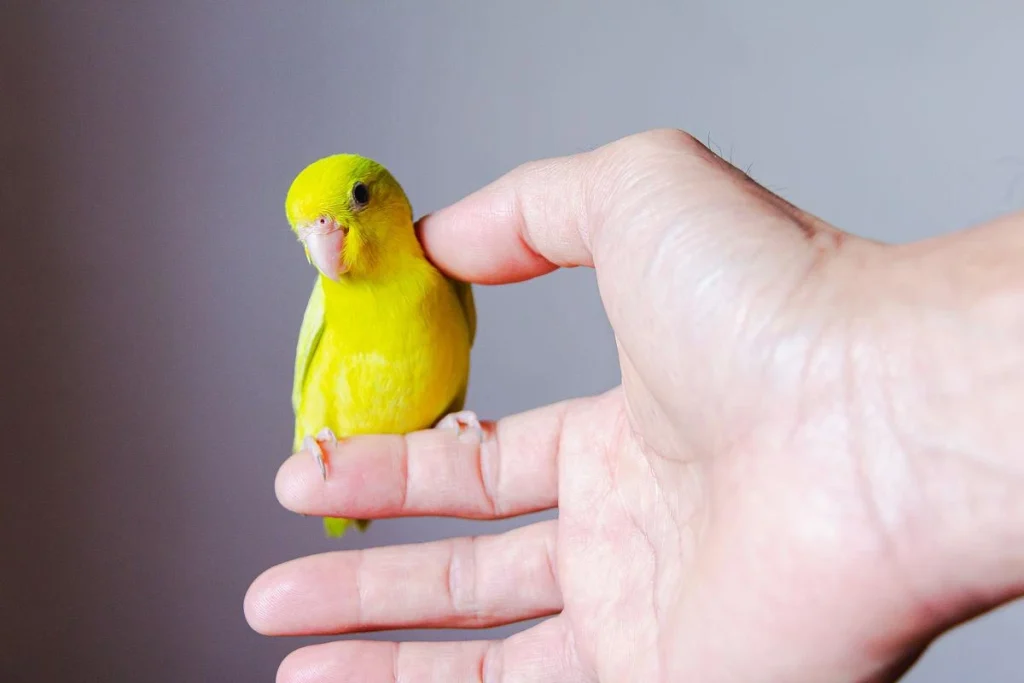
1. Why Are Parrots Easily Scared?
Parrots are prey animals by nature. In the wild, fear responses help them survive. In captivity, however, those same instincts can make them react strongly to unfamiliar people, environments, or stimuli.
Common Causes of Fear in Parrots
- Sudden movements or loud noises
- Unfamiliar objects or environments
- Lack of early socialization
- Previous trauma or abuse (especially in rescue birds)
- Forceful handling or rushed training
Veterinary Insight: A 2023 study in the Avian Welfare Journal found that parrots with high cortisol levels (a stress hormone) displayed increased avoidance behavior and feather plucking.
2. Recognizing When Your Parrot Is Scared
Reading your parrot’s body language is key to preventing fear escalation.
Fear Signals in Parrots
- Rapid eye blinking or eye pinning (dilated pupils)
- Fluffing up feathers suddenly
- Freezing or trying to flee
- Screaming or alarm calling
- Lunging or biting as defense
Experience Tip: Every parrot is unique. Learn your individual bird’s stress cues and respond with patience.
3. How to Create a Calm, Safe Environment
Parrots thrive in predictable and secure surroundings. Minimize stress by carefully curating their environment.
Environmental Tips
- Keep the cage in a calm area with natural daylight and minimal traffic.
- Avoid placing the cage near loud appliances, TVs, or air vents.
- Use gradual exposure when introducing new toys or perches.
Cage Positioning
- Place the cage at eye level or slightly higher, giving your parrot a sense of safety.
- Keep one side of the cage near a wall to reduce perceived vulnerability.
4. How to Approach a Parrot Without Scaring It
Your body language, voice, and energy all affect how your parrot responds.
Dos
- Move slowly and predictably.
- Speak in a calm, gentle tone.
- Offer your hand low and to the side—not over the head.
- Use soft blinking and avoid intense eye contact.
Don’ts
- Avoid sudden gestures, especially toward the head.
- Don’t stare directly or loom over the bird.
- Never grab a parrot suddenly from above.
Avian Behavior Fact: In the wild, predators come from above. Reaching over a parrot’s head can trigger a deep survival fear response.
5. Trust-Building Through Gentle Interaction
Fear fades when parrots feel in control and safe.
Daily Trust Exercises
- Sit near the cage and read aloud.
- Offer favorite treats through the bars.
- Allow the bird to choose when to come out or engage.
- Use target training with a stick to guide movement without pressure.
Time and Consistency Matter
- Short, consistent sessions (5–10 mins) work best.
- Avoid overwhelming your bird with too much attention too quickly.
Expert Advice (Avian Trainer): “The fastest way to build trust with a scared parrot is to do less. Let them come to you, and reward calm curiosity.”
6. What to Do When Your Parrot Gets Scared
Even in the best environments, fear reactions happen. Your response matters.
In the Moment:
- Remain still and silent.
- Avoid chasing or forcing contact.
- Gently speak to reassure the bird without moving closer.
After the Incident:
- Identify and remove the fear trigger if possible.
- Give your parrot time to reset before re-engaging.
- Log the situation to avoid repeating it.
Trust Tip: Never punish fear-based behavior. It deepens mistrust and damages your bond.
7. Socialization Without Stress
Exposing your parrot to new people, sounds, or environments should be slow and deliberate.
Socialization Best Practices
- Start with controlled exposure (e.g., letting your parrot observe from a distance).
- Introduce new people gradually, allowing them to offer treats.
- Use sound desensitization—play soft recordings of household or outdoor sounds at low volume.
Training Tip: Reward calm responses to novelty. Avoid forcing interaction or placing the bird in situations it can’t escape.
8. When to Seek Help
If your parrot shows persistent signs of fear or stress:
- Consult an avian veterinarian to rule out medical causes.
- Work with a certified avian behaviorist for trauma-informed guidance.
Trusted Resources:
Conclusion: Patience Builds Trust
Parrots are not naturally aggressive or unfriendly—they’re cautious, emotional, and highly intelligent. By learning how not to scare your parrot, you’re laying the foundation for a lifetime of trust, affection, and mutual respect.
Key Takeaways:
- Understand fear triggers and body language.
- Move slowly, speak gently, and avoid sudden interactions.
- Create a calm, secure environment.
- Use positive reinforcement to encourage curiosity and trust.
- Avoid punishment and never force physical contact.
FAQs
Q: My parrot is scared of me—can I still bond with it?
A: Yes. With patience, positive reinforcement, and respect for your bird’s space, trust can be built over time.
Q: Can parrots forget trauma?
A: They don’t forget, but they can heal. Consistent safe experiences can override fear memories with new positive associations.
Q: How long does it take to build trust?
A: It varies—some parrots respond in weeks, others may take months. Every bird is different.
Article title: How to Not Scare a Parrot – Build Trust with Gentle, Positive Interaction
Article link: https://www.parrot234.com/how-to-not-scare-a-parrot/
Disclaimer: The content of this site is contributed by users, compiled from the Internet, or edited by AI, so no guarantee can be made for the authenticity of the content! Please judge the authenticity of the content by yourself! However, if you find any suspected: plagiarism, infringement, illegal and irregular, suspected fraud, false and bad content, please contact this site in time through the "Contact & Suggestion" channel at the bottom. This site always maintains an active and cooperative attitude to deal with various problems, so after receiving the email, the corresponding content will be deleted!

